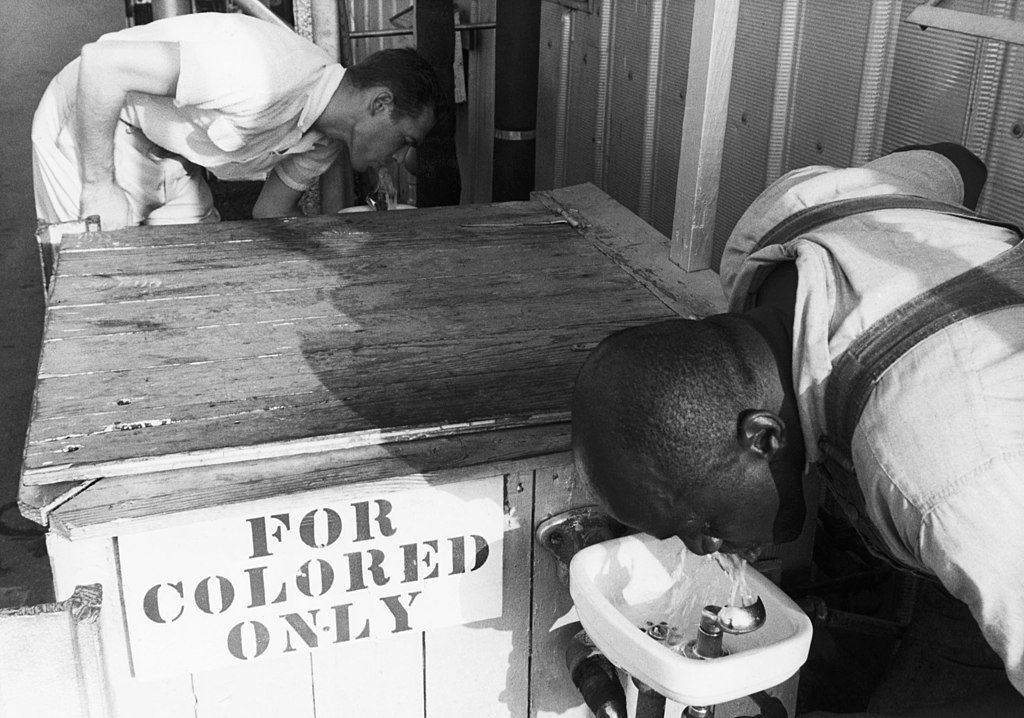What We Review
Introduction
Understanding the rise of Jim Crow laws is essential for anyone studying African American history. These laws affected every part of life, from voting to public transportation. After the period of Reconstruction ended in the late 1870s, African Americans faced new barriers to their freedom and civil rights. As a result, grasping the history of disenfranchisement is critical for explaining the struggles that followed. This article will explore how Jim Crow laws came to be, their impact on African Americans, and how Black writers and activists fought back—often at great personal risk.
Understanding Jim Crow Laws
Jim Crow laws were a series of local and state rules that enforced segregation and limited African American rights. The term “Jim Crow” originated in the 1830s as a derogatory name for African Americans. However, it later came to represent a legal system that divided communities along racial lines.
Post-Reconstruction Context
After the Civil War, the Reconstruction era offered African Americans new opportunities such as voting rights and public office positions. Yet, Reconstruction ended when federal troops withdrew from the South in 1877. Subsequently, white-dominated state governments passed legislation to undo much of the progress. These efforts led to the formal establishment of Jim Crow laws, which targeted African Americans’ newfound status.
The Supreme Court’s Role
In 1896, the Supreme Court case Plessy v. Ferguson declared “separate but equal” facilities lawful. Therefore, states could continue creating segregated public areas without breaking federal law. This decision gave Jim Crow laws powerful legal backing and made it extremely difficult for Black citizens to challenge them in court.
The Impact of Jim Crow Laws on African Americans
Jim Crow laws took many forms. Although these regulations appeared different across various regions, they all shared the same goal: to control and limit African Americans’ rights.
Limitations on Voting Rights
- Poll Taxes: Many Southern states required citizens to pay a fee to vote. Because African Americans were generally poorer due to discrimination, these taxes made voting impossible for most.
- Literacy Tests: Officials administered difficult reading tests, often with unclear questions. White voters usually received easier tests, allowing them to pass, while Black voters were set up to fail.
- “Grandfather Clauses”: Some states permitted men to vote only if their grandfathers had voted. Since most Black families had been enslaved before the Civil War, this rule excluded them once again.
These strategies, combined with the threat of violence, effectively stripped African Americans of the electoral power they briefly held after Reconstruction. This disenfranchisement meant African Americans had little say in laws that governed their daily lives.
Racial Segregation in Public Spaces
- Public Transportation: Buses, trains, and even streetcars had separate sections for Black and white riders. African Americans were forced to sit in inferior or less convenient seating.
- Schools: Black schools typically had fewer books, limited funding, and overcrowded classrooms, which created significant educational disadvantages.
- Hospitals and Cemeteries: These facilities were routinely segregated, so African Americans had access only to poorly funded services.
These policies were enforced through both local laws and societal practices. As a result, African Americans had to navigate constant reminders that they were not considered truly equal.

Legal Backdrop: Plessy v. Ferguson
The Supreme Court’s decision in Plessy v. Ferguson (1896) sealed the legal legitimacy of segregation. It told states that as long as facilities were deemed “equal,” they could remain separate. However, in reality, resources allocated to Black citizens were vastly inferior. Therefore, the supposed “equal” aspect never truly existed. The fight against Plessy would take many decades, eventually culminating in the 1954 Brown v. Board of Education ruling, which declared segregated schools unconstitutional.
The Nadir of Race Relations
Historians often refer to the period between the end of Reconstruction and the start of World War II as the “nadir of race relations.” Nadir means “lowest point,” and for African Americans, this era exposed some of the most severe forms of violence and discrimination in U.S. history.
Extreme Racism and Public Violence
During this nadir, lynchings and mob attacks became frighteningly common. Lynchings were brutal killings carried out by mobs without a legal trial, primarily targeting African Americans. Politicians and law enforcement sometimes turned a blind eye, which increased fear for Black communities.
Moreover, local newspapers often fanned the flames by spreading false accusations and biased reports.
Psychological Impact on African Americans
African Americans during this era lived with the constant threat of violence and injustice. Many had to leave their hometowns for northern states or more secure communities. They were forced to be careful in any dealings with white officials, neighbors, or strangers. Therefore, the emotional and mental toll was enormous. These conditions made simple daily tasks fraught with fear, shaping African American lives for generations to come.
Resistance and Responses from African Americans
Despite the hard reality of life under Jim Crow, African Americans devised ways to fight back. These efforts took many forms, from individual leadership to community-based boycotts and legal challenges.
Writers and Activists
African American journalists and authors played a vital role in exposing injustice. For example, Ida B. Wells-Barnett’s investigative journalism was groundbreaking. She wrote about lynching, disproving the myths spread to justify violence against Black people. Her work convinced many that these mob killings were not about justice but about controlling and terrorizing African Americans.
Highlighting Injustices in Journalism and Literature
- Ida B. Wells: Through her newspaper articles and pamphlets, Wells provided detailed accounts of lynchings. She showed readers the cruelty of these events and emphasized the lack of legal protection for Black Americans.
- Other Writers: Many African American authors wrote novels, poems, and short stories revealing the everyday hardships faced by Black families under segregation. Their written words aimed to draw national attention to racial inequality.
Community Activism and Trolley Boycotts
One of the most direct forms of resistance involved boycotts. African Americans refused to ride segregated streetcars or trolleys, which severely hurt transportation companies’ profits. After a time, some cities had to reconsider certain policies. Though local governments typically moved slowly, these boycotts showed that organized African Americans could challenge unfair systems.
The Role of Literature and Journalism
Writers and journalists became powerful voices during the nadir. Their articles helped form a sense of collective identity and resistance, providing African Americans with the strength to keep fighting. These writers risked harassment, financial punishment, and even personal harm. Yet, they persisted so that the truth about lynching and other racist acts could not be ignored.
Influential Works and Their Messages
- “A Red Record” by Ida B. Wells-Barnett (1895): In Chapter 1 of this publication, Wells carefully documented lynchings across the South. Therefore, she revealed the violent methods used to keep African Americans in a state of fear.
- Newspaper Campaigns: Stories and editorials challenged the excuses people made for treating Black citizens as second-class. They also boosted efforts to create local defense groups and civil rights organizations.
Conclusion
The Jim Crow era left a deep mark on the United States. Although these laws were eventually dismantled during the Civil Rights Movement of the 1950s and 1960s, the legacy of segregation and disenfranchisement remains a vital topic for students today. Learning about this history is key to recognizing modern forms of discrimination and tackling them with knowledge and courage. By remembering the efforts of activists like Ida B. Wells and the countless unnamed heroes who fought these injustices, future generations can carry forward the fight for equality.
Sources
- Excerpt from Chapter 1 of “A Red Record” by Ida B. Wells-Barnett (1895): This source reveals firsthand documentation of lynchings. It shows how fear and terror were used to keep African Americans under control during the nadir of race relations.
- Segregated Restrooms, Circa 1960: This image highlights the everyday reality of Jim Crow laws. Even basic facilities were divided by race, illustrating how systemic segregation impacted daily life.
- Segregated Water Fountains (date unknown): This photo further demonstrates the “separate but equal” concept. It makes clear the actual inequality that African Americans faced when forced to use inferior and poorly maintained facilities.
These sources connect to LO 3.5.A and LO 3.5.B by illustrating the impact of Jim Crow laws on voting, public spaces, and everyday life for African Americans. They also show how Black activists, such as Ida B. Wells, responded by exposing these injustices. By examining these documents and images, students gain deeper insight into the historical context, relevance, and lasting impact of segregation and the nadir of race relations.
Quick Reference Vocabulary Chart
| Term | Definition | Significance |
| Disenfranchisement | The removal of the right to vote or participate in political life | Reduced Black electoral power, weakening African Americans’ ability to influence laws and policies |
| Jim Crow Laws | State and local statutes enforcing racial segregation, mainly in the Southern states | Legally upheld racial inequality; affected all areas of public life |
| Poll Tax | A fee required to cast a ballot in elections | Used to prevent poor African Americans (and some poor whites) from voting |
| Literacy Test | Reading or writing tests needed to register to vote | Often rigged or unfairly graded to stop Black citizens from qualifying to vote |
| Plessy v. Ferguson | 1896 Supreme Court ruling that upheld “separate but equal” facilities | Provided legal foundation for Jim Crow segregation, legitimizing racist policies |
| Nadir of Race Relations | Term describing the period when racism and violence against African Americans peaked | Illustrates the severity of racist violence and the low point in overall race relations in the United States |
| Ida B. Wells-Barnett | African American journalist and activist who documented lynchings and racial injustices | Played a critical role in exposing the horrors of lynching and rallying support against discriminatory laws |
| Trolley (or Streetcar) Boycott | Organized refusal to use segregated transportation | Showed the power of collective action to protest racial segregation and discrimination |
Sharpen Your Skills for AP® African American Studies
Are you preparing for the AP® African American Studies test? We’ve got you covered! Try our review articles designed to help you confidently tackle real-world AP® African American Studies problems. You’ll find everything you need to succeed, from quick tips to detailed strategies. Start exploring now!
Need help preparing for your AP® African American Studies exam?
Albert has hundreds of AP® African American Studies practice questions, free response, and full-length practice tests to try out.









